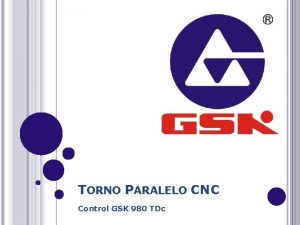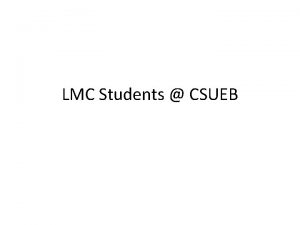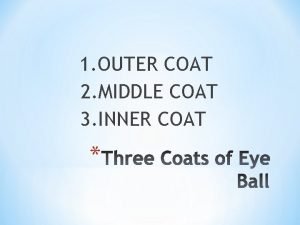TDI to coat or not to coat LMC








- Slides: 8

TDI: to coat or not to coat?

LMC action (for EN-STI, helped by TE-VSC and impedance team): study the impact of partial coating or no copper coating of the graphite jaw for the TDI spares, and bring the topic back to the LMC in time for deciding on the coating strategy of the TDI spares

Transverse impedance more quadratic behaviour at small width, saturating again with graphite impedance With 2 mm missing, the transverse impedance to the TDI increases by a factor 13 (60 k. Ohm/m). 4 mm half gap 0. 5 mm copper coating missing All in graphite [Note: 2015 TDI with nominal h. BN and Ti coating 290 k. Ohm/m] All in copper

Transverse impedance copper dipolar impedance /m length graphite bad coating in 2015 on TDI 8 (*4 scaling) Ti-h. BN 4. 4 105. 6 290 1160 12. 32 295. 68 812 3248 tune shift 4. 00 E-06 9. 60 E-05 2. 64 E-04 1. 05 E-03 total tune shift V 5. 10 E-04 6. 02 E-04 7. 70 E-04 1. 56 E-03 1% 16% 34% 68% dipolar impedance for TDI (2. 8 m) TDI as % of total tune shift octupole current needed 10 A? +~20% +~30% +~70% TDI was a large impedance contributor at injection Its contribution is almost zeroed thanks to copper coating Removing the coating is not expected to cause problems if we have margin For Hi. Lumi, a factor 2 increase is expected in octupole current. Is this ok?

Simulating the impact of missing copper coating on TDI surface Missing line of coating on top and bottom of the beam longitudinal impedance increases “linearly” with missing coating width and then saturates towards “only graphite impedance” after 5 to 10 mm width With 2 mm missing, the power loss to the TDI increases by a factor 10 (13 W/m of missing coating). power loss gets dissipated in the graphite but could heat up the neighbouring copper layer Power loss for 2748 bunches with 1. 25 ns at injection 4 mm half gap 0. 5 mm copper coating missing All in graphite [Note: 2015 TDI with nominal h. BN and Ti coating 177 W/m] All in copper

Simulating the impact of missing copper coating on TDI surface Missing line of coating on only on one side about half of the impedance compared to both sides power loss on the jaw with missing coating should stay the same 4 mm half gap 0. 5 mm copper coating missing

Power loss power loss /m length power loss per TDI jaw (/2*2. 8) copper graphite 1. 5 2. 1 bad coating in 2015 on TDI 8 (*2 scaling) Ti-h. BN 36 50 180 250 354 500 Important to remember: no (or very little) cooling available on the jaw Is the increase ok? Needs to know if this would become eventually a problem Needs thermal simulation from EN-STI and max allowed temperature for the TDI (TE-VSC and EN-STI) with a heat load of 50 W at injection and ~5 W at top energy. Longitudinal stability effects to be assessed, but no showstoppers assumed for now, to be confirmed with BE-RF

Proposed strategy for recommendation Is no coating OK for transverse impedance for Hi. Lumi Is no coating OK for transverse impedance now Most likely yes If all yes, coating is not absolutely needed yes Is no coating OK for power loss now no Is no coating OK for power loss for Hi. Lumi no If one of the two is no, needs coating already now Most likely yes















